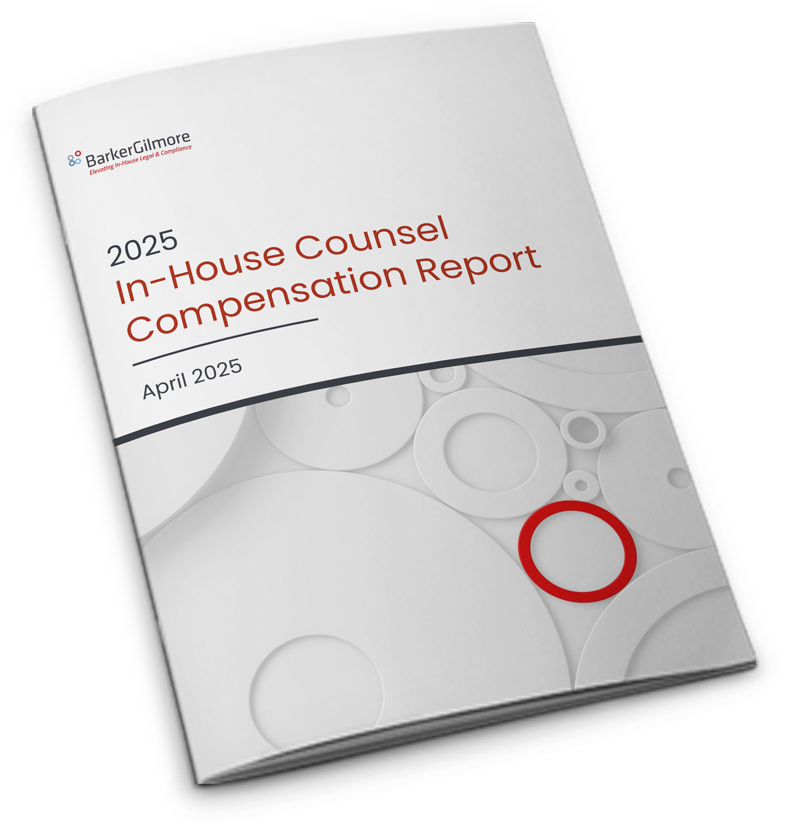BarkerGilmore is pleased to once again partner with Equilar for publication of the 2021 Edition of General Counsel Pay Trends, which seeks to shed light on how changes within the corporate legal realm affect General Counsel (GC) compensation.
For many years, reports have indicated General Counsel are not only seeking to be involved in a more strategic capacity, but most are also expected to do so by the senior management team and board. As a result of their increased involvement in determining the strategic trajectory of their organizations, many executive teams have become a three-legged stool consisting of the CEO, CFO and GC.
With stronger ties between ESG and the legal function, the General Counsel’s active involvement — not just their oversight — has become critical.
In addition, some GCs have taken on a variety of additional roles, including compliance, risk, human resources, security, government relations and ESG. Their involvement in ESG is not necessarily new or unusual; however, the proportion of General Counsel who are responsible for overseeing ESG-related initiatives has continued to increase significantly over the past decade. This is likely the result of not only a heightened focus on ESG, but also an increase in the number of matters falling under the ESG umbrella, including sustainability and diversity, equity, and inclusion (DE&I).
The ESG function itself has also evolved considerably. While many companies once focused primarily on environmental matters, the demand for communication, transparency, and equity in the workplace and across Corporate America has greatly affected governance and social matters. Now, all branches of the ESG function carry equal weight, are more and more ingrained in regular business practices, and are heavily scrutinized from a legal perspective. With stronger ties between ESG and the legal function, the General Counsel’s active involvement — not just their oversight — has become critical.
General Counsel are quickly solidifying their position as a true partner to the business and an indispensable member of the executive team.
Even in companies where the GC is not the lead executive for ESG, many play a central role in designing and implementing the ESG framework, pushing initiatives forward, overseeing disclosures, setting the right governance structures, and ensuring proper board attention is received. It is also worth noting the heightened demand for a focus on ESG is not expected to let up any time soon, and a time will likely come — sooner rather than later — when ESG is no longer a stand-alone function, but instead, one which is deeply woven into every other aspect of the business. Consequently, ESG matters are gradually becoming, and will continue to become, a core function of, and a required competency for, the GC role, regardless of whether or not they are head of the function.
It is not surprising, then, that General Counsel compensation has continued to increase in a manner commensurate with the GC’s level of contribution to their company. Some companies have seen a narrowing of the gap in compensation between the CFO and GC (with the CFO still more highly compensated than the GC) and a widening of the gap between the CHRO and GC (with the GC as the more highly compensated individual). These changes are indicative of the GC’s increased scope of responsibilities and value-add. So, too, does it prove GCs are quickly solidifying their position as a true partner to the business and an indispensable member of the executive team.
A few of the standout trends for 2020 were a higher percentage of appointments coming from outside of the company and an increased percentage of these hires being women and/or minorities.
Every year, approximately 10% of Fortune 500 companies appoint a new top legal executive. With most of America’s C-suite consisting of Caucasian males, CEOs and boards are looking at General Counsel appointments as a means of diversification. In 2020, 44 lawyers were appointed to the enterprise GC or CLO post compared to 56 in 2019. While this suggests lower turnover in 2020, 12 of the F500 were between GCs, further contributing to the robust and competitive 2021 market for talent. BarkerGilmore’s research team further dissected these findings to shed light on the path leading to this highly sought-after position. A few of the standout trends for 2020 were a higher percentage of appointments coming from outside of the company and an increased percentage of these hires being women and/or minorities. The overall percentage of women GCs in the Fortune 500 increased slightly to 34% in 2020, up from 33% in 2019, 28% in 2018 and 26% in 2017. While women are slowly gaining ground, 57% of the GC appointments promoted from within were male.
One of the challenges to significantly moving the needle on diversity within the GC ranks is the insistence of CEOs on hiring a sitting GC. While the new hire is a win for one company, another takes a hit. With increased attention on succession planning and an eye on attracting succession-worthy talent below the General Counsel level, the candidate pool for the top spot should improve. The focus of attention needs to be on the soft skills required for the role including gravitas, ability to establish trusted relationships, and leadership experience.
Connect with a legal recruiting advisor
* indicates required fields




